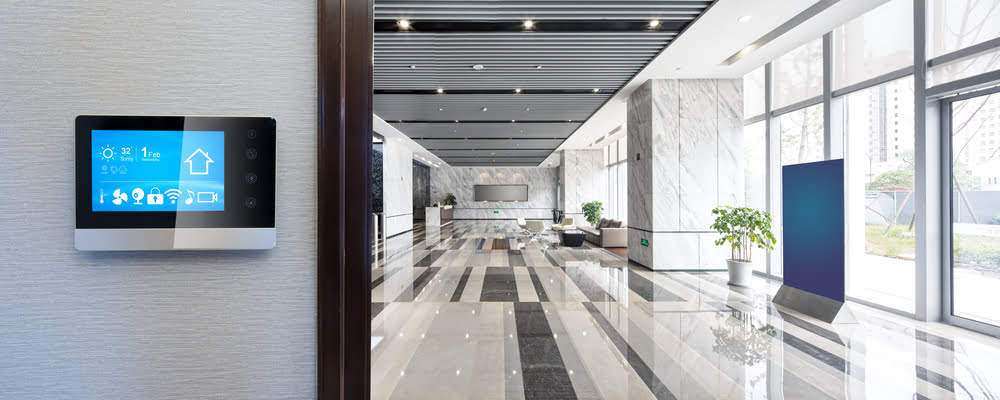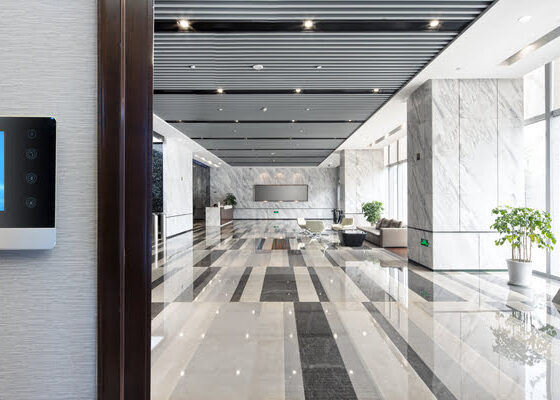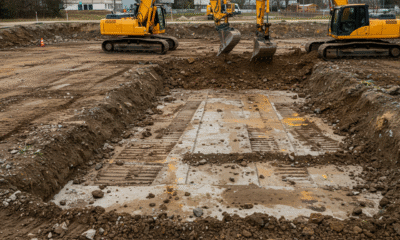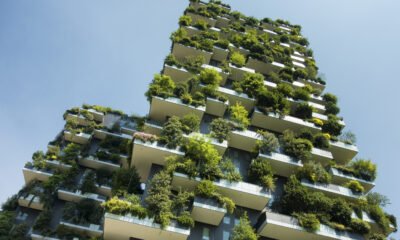

Environment
Smart Buildings Are Helping Create Greener Urban Environments
Since the UK government is continuously pushing for greener initiatives, more and more buildings are jumping on the Green Industrial Revolution. With that said, the spotlight has been on the construction industry for quite some time. However, it’s best to note that both fines and reputation damages can follow.
In essence, these fines are being applied heavily to the likes of construction companies that fail to comply with these regulations. For a long time, this has been one of the most prominent issues that are being dealt with. Hence, up to 40% of buildings are now contributing to the UK’s overall carbon footprint.
As such, companies and professionals have a huge part to play in this initiative. With that said, the pressure is increasing and it is being seen by many of the industry’s reputable companies. Both legislators and customers are pushing hard for buildings that reduce the already high carbon footprint. They are also looking into new solutions like green leases.
However, all of this comes at a cost. New and improved buildings or green buildings can only truly be created by building new smart buildings. This in turn pushes a higher demand for innovative digital products. As such, the foundation in this needs to be properly thought out with critical data.
Building Back Smarter
Since companies are now being made to limit and measure the carbon output, they need to conduct a full lifecycle perspective. In essence, the Green Building Council of the UK aims to significantly reduce all emissions from buildings. In order to successfully comply, these companies will be required to determine areas of improvement that contribute to reduction.
One solution is to implement this over a series of phases. The first should be geared towards the design phase. In essence, before any work begins, it should be dealt with. In this way, all of the efforts are considered from the beginning before the other stages of the project can begin.
During the final assessment, the contractor should be given the opportunity to ensure that the carbon footprint can be offset. This ensures that the company can easily achieve net-zero project success. In the case of the full lifecycle approach, the building’s operation stage must be considered.
This is due to the fact that traditional structures are set in place and their systems are not digitally connected. This just simply means that there is no real system in place to track what is taking place. As a result, more and more managers are aiming to intervene in a positive light.
However, their intervention is based on a collection of real-time data. All of this must be collected and accurately stored during the construction phase. Moving forward, companies should be able to deliver their personal brand of smarter building tech.
If we’re going to recreate in a greener manner, both decarbonization and digitization will be huge factors in the industry. They will be the center from the inception of construction. When the latest tools and techniques are implemented, companies will be able to largely benefit.
Connected Foundations
Since layers and layers are required to connect the sensors and devices, special attention will need to be directed in this sector. As such, instruments such as energy sensors, smart circuit-breakers, and others will need to be installed. This will not only track but also maintain the systems employed by the building.
These state-of-the-art buildings generally require a very interoperable and open backbone. This just means that the connection medium should be connected to the building management system. This is a crucial step in storing any real-time data that may be critical for intervention. As such, it is responsible for having an energy-efficient building.
Since more visibility will be provided, companies can now pick point any area that is wasting energy. This can be easily used to reduce or even eliminate the issue in one go. Over some time, systems producing the largest footprint will be removed. This is one of the few ways that reduce carbon in little time.
When these buildings are thrown into the digital era, they become just as attractive or even more attractive. If for some reason work and revenue are lost, buildings will still see clients streamlining the costs. In essence, this returns the cost. One such incident is the pandemic.
Being energy efficient is a huge way to combat some of these issues. Utilities and energy are huge and usually cost a fortune for building owners. With efficiency, the cost will be recovered and contractors will be saving the planet one day at a time with a cost-effective plan.
The Future Is Green
As we move forwards, these efforts should be spread to different industries. This ensures that businesses keep going as they make conscious contributions to the planet. These companies will be continuously supported by the various organizations throughout as they move to green buildings and green solutions.
In an effort to remain competitive, the needs of clients will need to be continuously met. As such, more and more smart tech will be put in place to facilitate this. Carbon reduction is being considered widely from the bottom up. Hence, contractors will easily meet the demands of their clients as they work together to reduce their carbon footprint.


 Environment10 months ago
Environment10 months agoAre Polymer Banknotes: an Eco-Friendly Trend or a Groundswell?

 Environment11 months ago
Environment11 months agoEco-Friendly Home Improvements: Top 7 Upgrades for 2025

 Features9 months ago
Features9 months agoEco-Friendly Cryptocurrencies: Sustainable Investment Choices

 Features10 months ago
Features10 months agoEco-Friendly Crypto Traders Must Find the Right Exchange




























